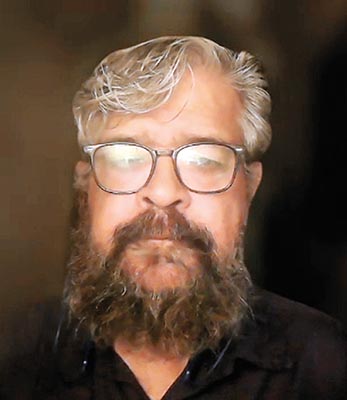
A large number of lakes are alive
Bengaluru has more water, distribution is the big worry
Civil Society News, Bengaluru
BENGALURU has a lot going for it, from tech companies and global investors to a salubrious climate and a cheerful cosmopolitan character. But when it comes to water in taps, nobody is quite sure what to think.
Last year crisis struck with some 4.5 million residents finding almost overnight they were without water. The good news this summer is that there is water available. But how efficiently it will get distributed remains a concern.
The numbers for water availability this year stack up as follows: There are 1,450 million litres a day that are already being pumped and an additional 775 million litres a day are available from the Cauvery. Taken together that is good enough to meet the city’s needs. The dams are also full and some 180 lakes have also been readied.
Says S. Vishwanath, engineer and activist: “There is no scarcity. The critical issue is the distribution network. Will the water reach all of Bengaluru? Of the additional 775 million litres a day of Cauvery water I think we’re pumping only around 300 million out of that, but 775 million litres per day is there. Added to the 1,450 million litres, it is a substantial volume of water.”
“There is a lot of work being done on lakes. There are 183 lakes which are reported to be alive or being worked on. Treated wastewater is being fed into 40 lakes,” adds Vishwanath.
The problem is that the two biggest lakes, Bellandur and Varthur, continue to be dry. They are being desilted on orders of the National Green Tribunal (NGT) in response to a PIL. Bellandur is 906 acres and Varthur is 284 acres. If both were functional, they would be recharging aquifers to the extent of 100 million litres per day at least.
It is not as though no recharge is happening. Upstream from Bellandur and Varthur there are 35 smaller lakes which are functional. But in the absence of the two big ones, the kind of withdrawal that is taking place is much higher than the recharge.
Bengaluru’s problem has been more about poor management of supply than availability of water itself. The city gets a lot of rain. It has lakes and the Cauvery is a source. But the state government and city administrations haven’t been able to wrap their heads around effective solutions to calibrate supply with demand and improve infrastructure.
 |
| S Vishwanath |
An ever-growing city needs systems to keep up with its expansion. Bengaluru’s management of its water supply could be more sophisticated. There is need for better regulation and oversight. The government would also do well to have more qualified people such as hydrogeologists for running the system.
Last year’s crisis was brought on by the failure of rains, lakes being dry and desilted, additional Cauvery water not being available and severe depletion of aquifers. The worrisome thing is that no one saw it coming.
The city has an unhealthy dependence on groundwater. There are 11,816 borewells which are under the gaze of the government. Of these 2,035 are known to be dry.
After last year’s crisis a study has been conducted on the viability of the 11,816 borewells. Meters will be attached to each of them together with a fee for extraction. Additionally, Artificial Intelligence (AI) will be deployed to better manage their use.
But this is just the tip of the challenge relating to groundwater. There are an estimated 500,000 tubewells run privately which the government has shown itself unable to monitor. These borewells pump out 800 million litres daily.
The desilting of the Bellandur and Varthur lakes is an example of the laxity in management and planning that prevails. The NGT, responding to a PIL, had ordered the two lakes to be desilted. A committee set up for this purpose decreed that the two lakes be excavated to a depth of six or seven metres.
This has led to a problem of what to do with such large amounts of silt. It was at first being given to farmers who decided they didn’t want it because of fears that the silt contained heavy metals. It was then being transferred to abandoned quarries, but the quarries can take no more.
“They’re still struggling to figure out how and where to get the silt dumped. Plus, there’s been a budgetary constraint. A budget was estimated but the monies haven’t been coming from the state government. I don’t have a number but `300 crore is what is being mentioned as the cost,” says Vishwanath.
“It’s clearly a massive amount of silt and transportation by truck itself is huge. The roads don’t have the carrying capacity. The constant movement of trucks going through small narrow lanes sends up large amounts of dust. All these are really problematic issues,” says Vishwanath.
“The committee took a rather fundamental view, in my opinion, of what lake cleaning should be. And they were very clearcut that it would have to be this and nothing less. It could have been in proportion to finding the place for the silt to be deposited,” he says.
“I’m not sure that it had to be that because the real problem with the lake is actually the sewage that comes in. Fencing on the boundary is also important. The silt itself does not have a major role to play unless it obstructs recharge of the aquifers, but there’s no study at all on how much silt should be removed to facilitate recharge,” Vishwanath explains.
Efforts are being made to be more strategic. The Bengaluru Water Supply and Sewerage Board (BWSSB) commissioned a study by the Indian Institute of Science (IISc) to improve its understanding of aquifers and how they are going dry.
“So now there’s much more granular understanding of which aquifers are going dry. There are 45 aquifers that have been identified, which translates into 45 zones that have been identified where the groundwater table is falling precipitously,” says Vishwanath who sits on the BWSSB’s technical committee.
So far borewells have been drilled without proper oversight. The Groundwater Authority is supposed to give permissions, meter the extraction and charge `5 a kilolitre for commercial use. It has been remiss in this role. But now with the IISc report on aquifers, the BWSSB is at least showing interest in understanding aquifers.
While the professors of IISc have done their job the next stage is for the BWSSB to put meters on the 11,816 borewells that come under it and use technology such as AI to understand how they can be sustainably operated.
“So, they’ll want to put smart meters and have a dashboard to know the quantity and quality of water that is being extracted. But this is only for the 11,816 borewells in the public sector. There are 500,000 more wells in private hands for which there is no comprehensive thinking as yet,” says Vishwanath.
A comprehensive solution to Bengaluru’s water problems remains a long way off. But there is hope that the city is getting there even if progress comes by the inch. One example is the opportunity that water harvesting presents.
Vishwanath has been canvassing for having a million rainfed wells in Bengaluru city. Over time 300,000 have come into existence one way or another. Water harvesting has also been made mandatory for passing building plans and sanctioning water connections. Most importantly, big developers have begun to see water harvesting structures as not just essential for the sustainability of their projects but a plus point for attracting buyers. “There are many challenges, but I prefer to see the glass as being half full,” says Vishwanath who believes that reuse and water harvesting are among Bengaluru's successes. A mere blame game for what has been going wrong will lead nowhere while working with the government to find solutions will fix some things, however slowly.
Comments
-

Dilip Thakore - May 8, 2025, 11:28 a.m.
Excellent framing of issues and analysis. Thankls for valuable public service!






